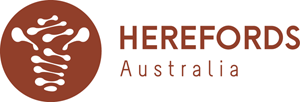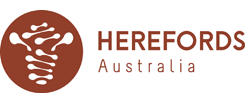Hereford cattle continue to gain awards in major national feeding and carcase competitions and we need to keep building momentum. Most recently, we saw Truro pick up a number of awards in the RAS 100 day and 70 day grain fed competition which includes both feedlot performance, carcase and eating quality awards. Along with impressive weights gains, the Truro cattle also took out carcase and eating quality awards with top honors for eating quality in the 100 day category for a Hereford x Santa steer and the top carcase in the 70 day category for a pure bred Hereford steer. This follows recent success for Devon Court in the RNA paddock to palette competition along with a number of Hereford carcase awards at Casino and Wingham for Joe Leven and Elite respectively along with Te-Angie cattle outperforming all other breeds being fed at a local high school on a weight gain basis . Hereford cattle entries are among the highest in the Larder Park grassfed steer trial and we will let you know the results as they come to hand. What this demonstrates is that Hereford cattle are performing under a wide range of conditions and feeding programs. The more entries we can get into major events will give us a greater chance to leverage the results for the benefit of the breed. Beef Australia 2024 national carcase competition is well underway and if anyone needs assistance getting involved in this or any other carcase competition, please contact the office and we can see if we can help. There are added benefits of direct feedback on your cattle performance, benchmarking how your cattle perform against other cattle and taking a chance to showcase your program. I think if we can get more Hereford entries in these competitions we will create more opportunities to shine.
In a very complimentary way, Hamish Chandler and I have been analysing the MSA grading data submitted by members. With 30,000 grass fed MSA records and 4000 grain fed records, it starts to be a powerful data set to review where we are going well and where we need to improve. Like every breed, there is variation however if we can identify the key drivers to improve and breed more of the top end cattle, we will be in great shape for the future.
As this table shows, to achieve higher MSA index (key payment specification), we need to deliver higher weight at younger age and the more marbling the better. The traits in the MSA model are additive so we must not single trait select. What this also shows is that our average MSA index outcome is in the top 30% of all MSA graded cattle nationally. Considering the data has come from central QLD to Tasmania and covers a broad range of seasonal conditions – including the worst drought in living memory, this is a very good result.
As this graph highlights, the big opportunity is to reduce the variation, continue to shift the curve to the right and produce more of the animals that will be worth more to the consumer. That will drive value and profitability for our customers and drive demand for Hereford cattle. This data is highly valuable and continues to help me open up conversations with commercial partners. It provides data and evidence that our breed delivers when it comes to eating quality. The more data I can receive the better. I encourage all members to reach out to your bull buying clients to see if we can continue to build on this data as it is a very compelling story.







